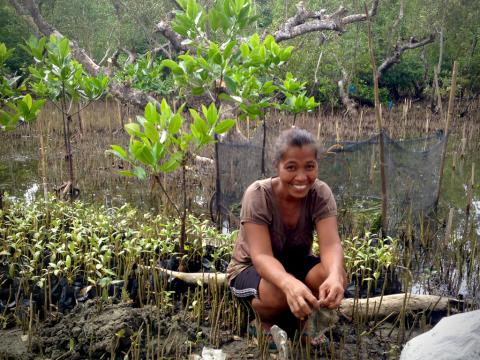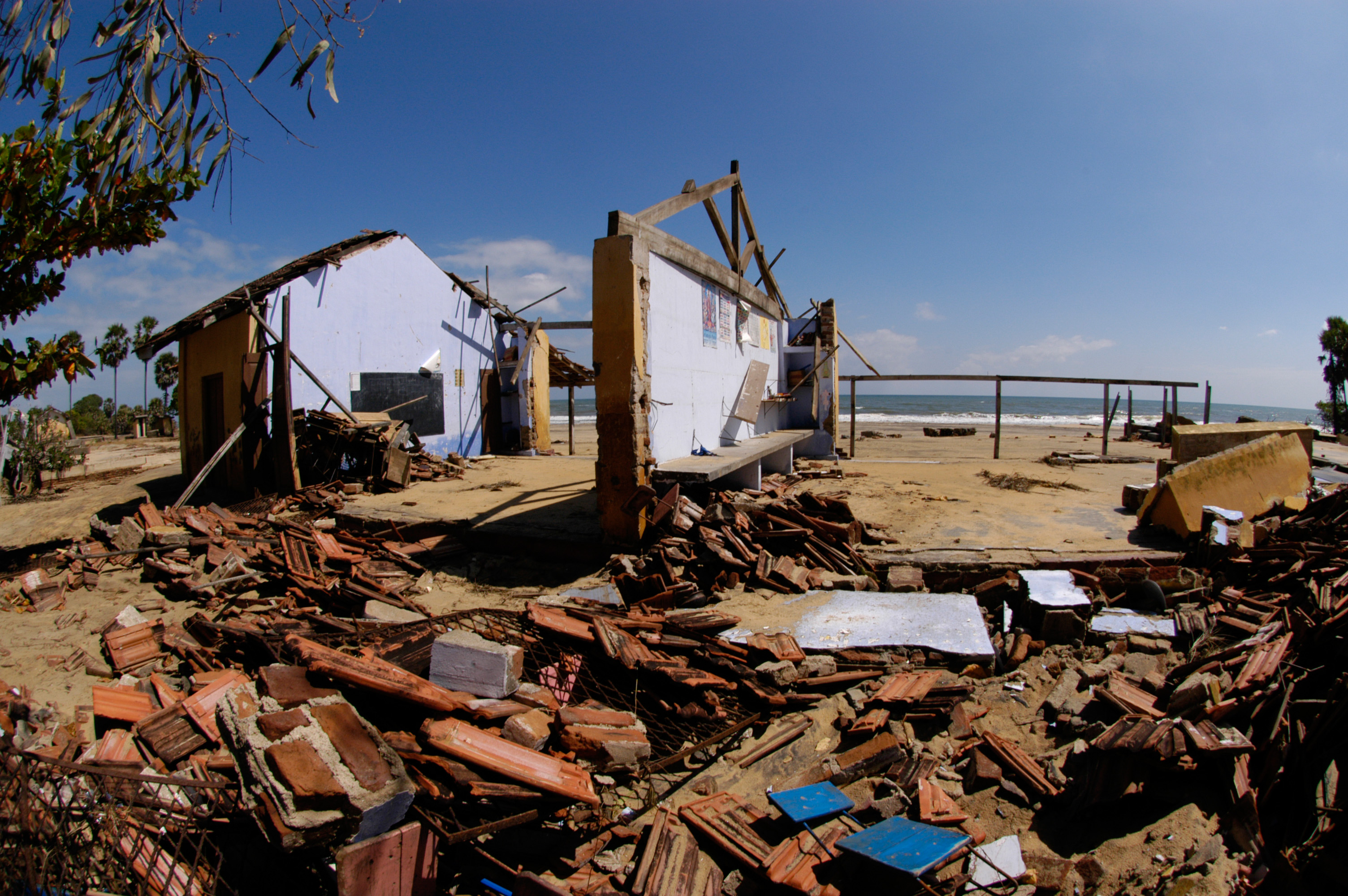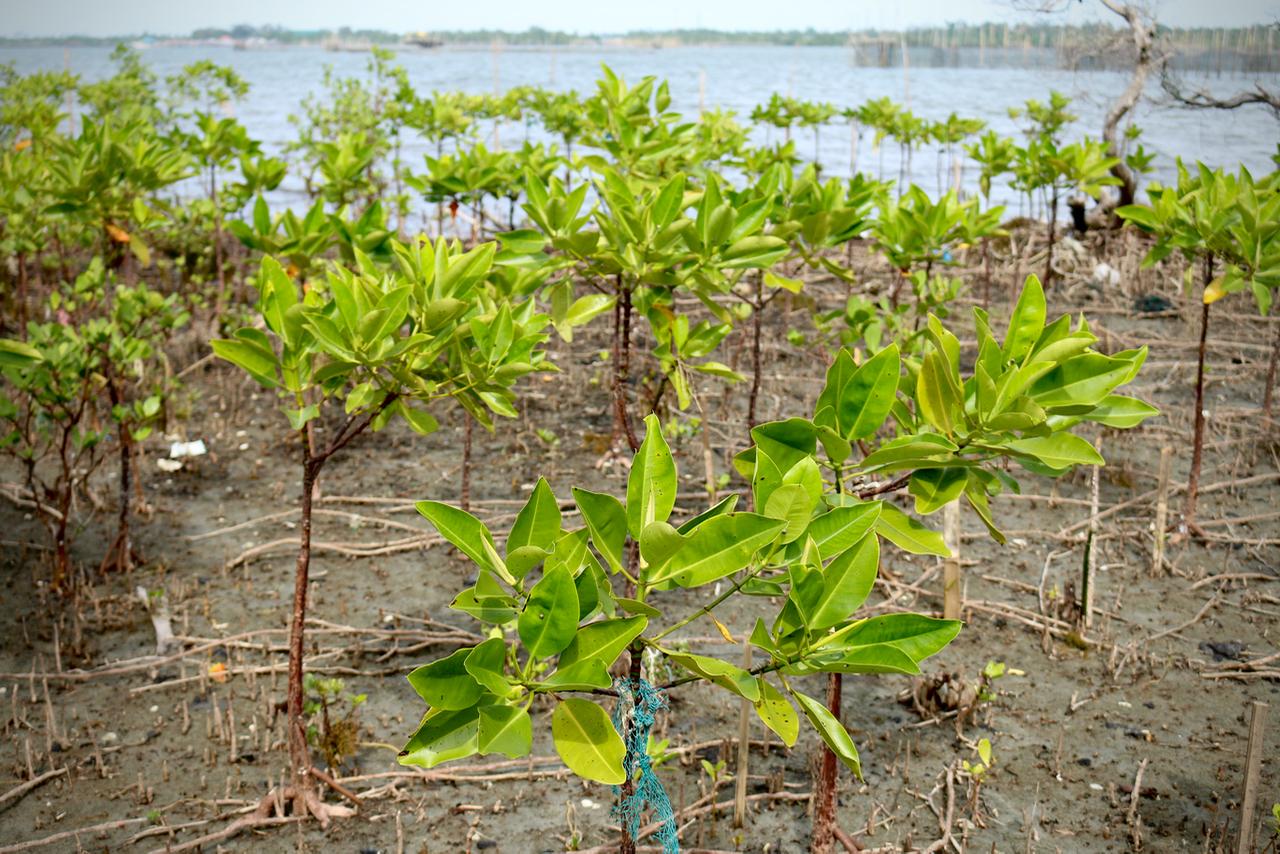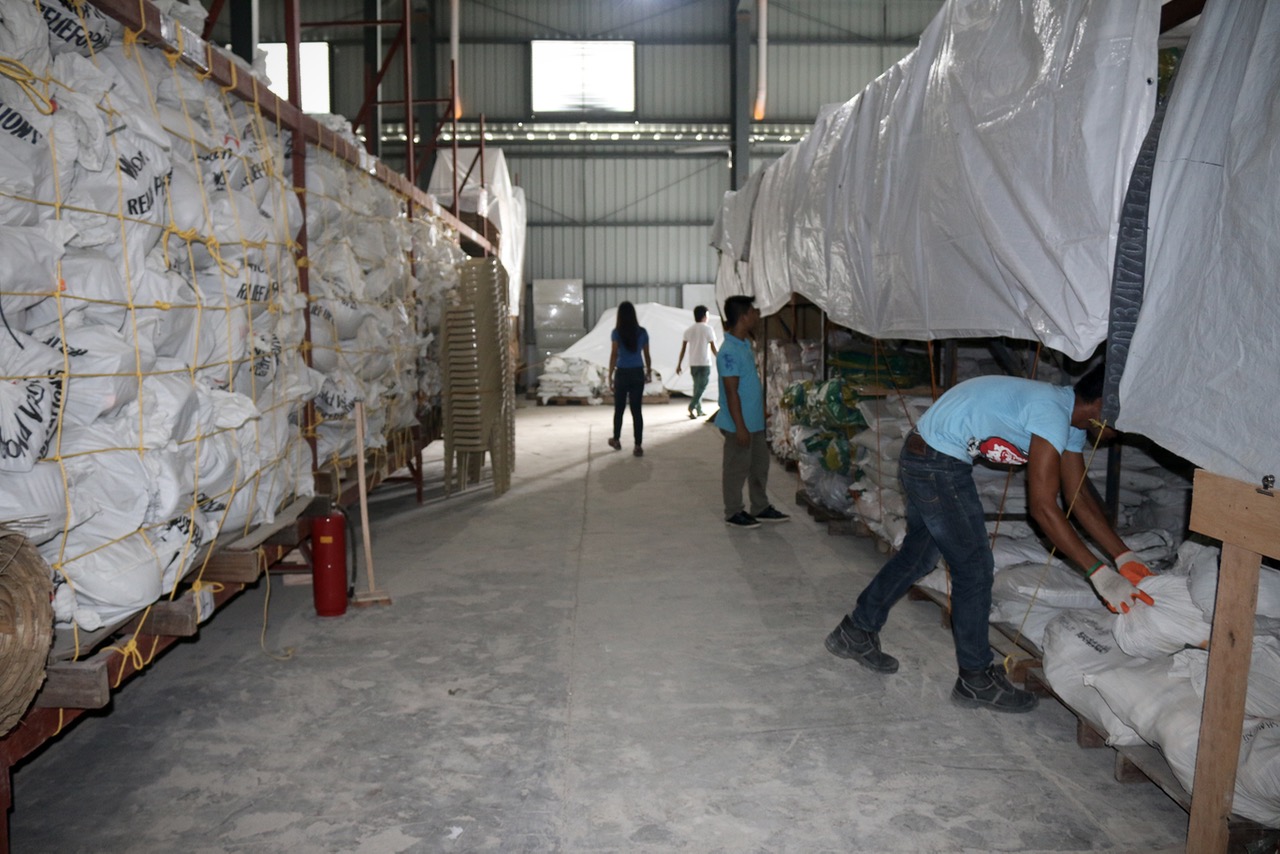Op-Ed: Making a difference with Disaster Risk Reduction

As we dragged our tired bodies up the hill to the crumbling Buddhist temple, we saw masses of people gathered around the base of the white stupa; some were injured and being comforted by others, some were visibly rattled with the grief of being separated from friends and family they couldn’t find amongst the chaos. Most just sat there; oddly quiet, staring off into the distance.
We found a small patch of ground and settled in to wait. We started talking to some of the locals who were also sheltering at the temple, and who generously shared their meagre supplies of tea and rice with us.
I didn’t know it at the time, but I had just experienced the 2004 Indian Ocean Tsunami.
As it grew dark, a single scream pierced the night air. It was soon joined by a chorus of screams, followed by a stampede of people gathered at the temple running to the top of the hill.
'It’s coming again!' they were yelling. “The whole world is under water. India? Gone. Australia. Gone,” one man told us.
After the magnitude of devastation I had seen just hours earlier, I had no reason to doubt him. My body went cold and clammy, and I turned away from him and vomited violently. And then I sat; quiet, staring into the distance.
I didn’t know it at the time, but I had just experienced a part of the 2004 Indian Ocean Tsunami.
Triggered by a 9.1 magnitude earthquake off the west coast of Sumatra, Indonesia, the tsunami was one of the deadliest natural disasters in recent history, killing 230,000 people in 14 countries and displacing millions more.
A damaged school on the coast of Sri Lanka, days after the Indian Ocean Tsunami hit on 26 December 2004. Jon Warren/World Vision
It sounds naïve to admit this now, but at that stage I didn’t even know what a tsunami was; neither did most of the local people I spoke to at that tiny temple on the south coast of Sri Lanka that night, nor my colleagues in the days and weeks thereafter.
Not only was this experience the catalyst for my entry into humanitarian work, but it was also a brutal lesson in the old adage that ‘knowledge is power’. How can you prepare for what you don’t know about, and how can you reduce the risks that threaten you and your family without reliable and timely information?
Forgetting to be prepared
Sri Lanka, like many countries and cultures within South East Asia, developed its own endemic approaches to mitigating and preparing for disasters over time. There are numerous written and oral accounts of ‘large tidal waves’ from as far back as circa 158 B C in Sri Lanka, and reports of local methods of early warning and disaster preparedness that are interwoven with religion and mythology that stretch just as far back.[1]
Common belief in Sri Lanka holds that both wild and domesticated animals beat a hasty retreat from locations long before disasters strike, serving as a natural early warning system. And indeed, following the 2004 Tsunami there were widespread observations of unusual behaviour of animals in areas along the coast; strange sounds and movements of eagles and seagulls in Yala National Park, large numbers of snakes gathering around the base of bridges in Batticaloa, elephants moving inland en masse. In fact many people believe that the small number of animals that died in the Yala National Park proves the animals sensed the tsunami before it struck in order they could escape.[2]
For every dollar spent on preparedness, it saves $7 in relief and recovery costs.
But like many countries, the absence of an immediate threat can mean some of these preparedness measures can lay dormant or be forgotten. That is, until an event such as the Indian Ocean Tsunami serves as fierce reminder of the value of vigilant risk reduction and preparedness. And the value is not just in human lives either; for every dollar spent on preparedness, it saves $7 in relief and recovery costs.[3]
For the humanitarian community too, the Indian Ocean Tsunami was a turning point in prioritisation of disaster risk reduction and preparedness. While the First World Conference on Natural Disasters held in 1994, it wasn’t until the second World Conference on Disaster Reduction in 2005, held less than a month after the Indian Ocean Tsunami, when the international humanitarian community and government actors really started to take Disaster Risk Reduction (DRR) seriously.
Resultant from the conference was the landmark Hyogo Framework (replaced by the Sendai Framework in 2015) – a global commitment to DRR that, amongst other things, put into place an international early warning system that could complement the traditional disaster risk reduction practices and warning signals provided by animals along the coast line in Sri Lanka.
Unlike 10 years ago, DRR now plays a central role not just in the emergency response plans of many humanitarian actors - including World Vision- but is also incorporated into transformational development initiatives, and as such is now a major part of the regular development program within World Vision Sri Lanka.
The provision of sustainable livelihoods support, such as developing alternate livelihoods for fishermen through onion and other crop cultivation is one such activity. The purpose of creating diversified income generating opportunities is so they can be harnessed if and when the family experiences shocks, such as natural disasters, that affect the primary livelihood and ability to generate income to provide basic goods for their families.
Also common in the area development programs of World Vision Sri Lanka are community based disaster management structures and plans, including local response teams that the organisation supports in coordination with the Government’s disaster management units in the respective areas. Depending on the community and the risks they face the teams may be focused on early warning, search and rescue, first aid, village security, or camp management that participate in community-based drills and simulations, and are activated in the time of a disaster to provide a grass-roots level response.
Never too early (or late) for DRR
Similarly in other recent emergency responses I have worked on with World Vision, DRR is integral to relief and recovery operations; and positively impacting the resilience of disaster-affected communities is often at the centre of the response strategy.
In the aftermath of Super Typhoon Haiyan (local name Yolanda) - one of the strongest tropical storms ever recorded with sustained winds of up to 315 km/hour and powerful storm surges - DRR was a crucial component of the recovery efforts. As well as advocating at the national and provincial level for improved DRR policy and legislations, and developing new disaster-resilient designs and construction for schools and health centres, World Vision worked at the village level to help communities identify local DRR solutions.
Many of the coastal communities acknowledged erosion of their coastline as one of the major risks facing their communities as it left them more exposed to weather events and reduced the land available for income generating activities. Our team worked with communities to plant and protect different species of mangroves along large swathes of coastal land. Established mangroves can reduce wave heights, protect the coast from erosion, reduce the current and attenuate wave heights [4], and absorb substantial wave energy.
Looking to Nepal
In Nepal, where earthquakes have been a recurrent phenomenon, local building practices that can weather the impact of earthquakes have been handed down from generation to generation, but this knowledge has eroded over time.
In many parts of the country, houses are built with vertical and horizontal timber posts embedded in the masonry and double framed doors and windows act as reinforced openings. Other practices used oval shaped or circular buildings with sloping rooves that were relatively stronger than the conventional rectangular buildings.
One high profile example is that of Nyatapola, the five-tiered temple in Bhaktapur that has survived numerous earthquakes in its 300-year history (including the 7.8 magnitude earthquake on 25 April this year) thanks to its grand plinth that was a ‘lesson learned’ from other temples in Kathmandu Valley, which were destroyed during earthquakes prior to its construction.
Similarly, the World Vision earthquake response strategy aims to build back better.
Families wont just be given new shelter materials, they will also be able to undertake build-back-better training where they will learn about construction techniques that relate to house location and shape, foundations and joints, and wall and roof framing that will ensure their new houses are more resilient when the next disaster strikes.
Philippines – Typhoon Hagupit
Almost ten years to the month after the Indian Ocean Tsunami, I was driving with a small group of colleagues to the east coast of the Philippines to undertake a rapid assessment and work with local government to distribute immediate relief items the day after Typhoon Hagupit (local name Ruby) hit the coast. While Typhoon Hagupit wasn’t as strong Typhoon Haiyan, which happened the year before, there were reports of sustained winds up to 285 km/hour.
We were expecting the worst as we made our way towards where the Typhoon made landfall. When we arrived we headed straight to the local schools and community halls where we know people gather in an emergency.
Many people we talked to lost their homes, but what stuck me when I think back to the scene at the temple 10 years ago is that this time people were better prepared and had more information. Many people self-evacuated days before the typhoon hit after they had taken their livestock or boats to higher ground and came to the evacuation centres with their household emergency kits – pre-packed bags with basic goods the family needs to survive for a few days.
With the frequency and intensity of disasters increasing [5] it is not possible to think we will live in a world where we won’t brush up against the brutality of a disaster from time to time.
Having accurate and timely information about the risks in your community, being empowered to prepare for and mitigate these risks using local and external practices, and knowing where and what to do in the event of an emergency will make all the difference.
About the author | Catherine Green has worked for World Vision as part of its Response teams for some of the largest natural disasters over the last ten years including the Indian Ocean Tsunami in Sri Lanka, Typhoon Haiyan in Philippines, and the recent Nepal Earthquake Response. She was volunteering with the Australian Youth Ambassador for Development Programme, funded through AusAID in Sri Lanka when the Indian Ocean Tsunami hit, then joined World Vision at the end of 2005. Her background is in Community Cultural Development; working in a number of Aboriginal and remote communities in Australia. She has a Master of International Development and a post-graduate certificate in Humanitarian Leadership.
Catherine is currently the Disaster Management Specialist for the South Asia Pacific Regional Office of World Vision.


